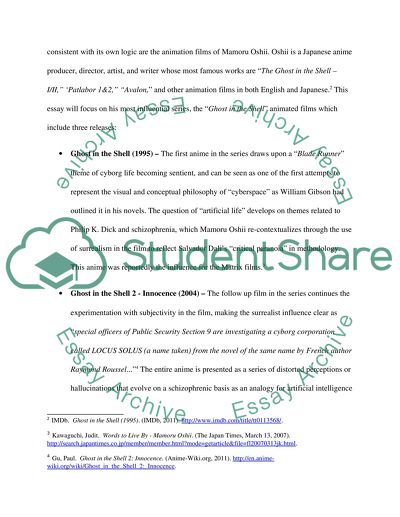Cite this document
(“Mamoru Oshii: Post-Modern Surrealism in Japanese Anime Essay”, n.d.)
Retrieved from https://studentshare.org/visual-arts-film-studies/1420445-abstract-expressionism-and-surrealism
Retrieved from https://studentshare.org/visual-arts-film-studies/1420445-abstract-expressionism-and-surrealism
(Mamoru Oshii: Post-Modern Surrealism in Japanese Anime Essay)
https://studentshare.org/visual-arts-film-studies/1420445-abstract-expressionism-and-surrealism.
https://studentshare.org/visual-arts-film-studies/1420445-abstract-expressionism-and-surrealism.
“Mamoru Oshii: Post-Modern Surrealism in Japanese Anime Essay”, n.d. https://studentshare.org/visual-arts-film-studies/1420445-abstract-expressionism-and-surrealism.


